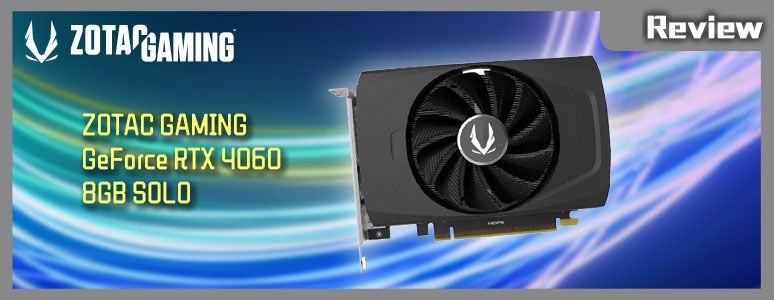
The ZOTAC GAMING GeForce RTX 4060 8GB SOLO, a leading-edge 1080p gaming graphics card, marks a new era for gamers. Its compact size of just 16.3 cm, along with a single fan, makes it an ideal match for any ITX small host aiming for 1080p gaming. This petite powerhouse promises low power consumption and impressive cooling capabilities. Plus, its DLSS 3 support ensures future-proof gaming.
Key Specifications of ZOTAC GAMING GeForce RTX 4060 8GB SOLO:
- GPU: NVIDIA GeForce RTX 4060
- PCI Express: 4.0 x8
- CUDA Cores: 3072
- Tensor Cores: 96
- RT Cores: 24
- Boost Clock: 2460 MHz
- Memory: 8GB GDDR6
- Memory Speed: 17 Gbps
- Memory Interface: 128-bit
- Dimensions: 163 x 117.6 x 39.5 mm
- Slot Requirement: 2 Slot
- Power Connection: 1x PCIe 8-Pin
- Recommended PSU: 500W
- DirectX Support: DirectX 12 Ultimate
- OpenGL Support: 4.6
- Display Outputs: 1x HDMI 2.1a, 3x DisplayPort 1.4a
- Max Simultaneous Displays: 4
This small yet mighty graphics card is not just compact and power-efficient but also future-ready for the evolving world of gaming.
ZOTAC GAMING RTX 4060 8GB SOLO out of the box
ZOTAC has unveiled its latest Mini ITX graphics card in the NVIDIA RTX 40 series, the RTX 4060 8GB SOLO. Using the NVIDIA Ada Lovelace architecture with 8GB GDDR6 128-bit memory, this card aims to dominate the mainstream gaming market at 1080p Full HD resolution. The question arises: will this shake up the gamers’ graphics card preferences?
The ZOTAC GAMING RTX 4060 8GB SOLO is outfitted with the IceStorm 2.0 single-fan cooling system and boasts a nominal power consumption of just 115W. With its compact size and minimal heat output, it’s the perfect companion for Mini ITX / SFF hosts. The SOLO model is poised to replace Twin Edge as ZOTAC’s top choice in the RTX 4060 range. Interestingly, it’s being offered at a direct, special price, lower than the MSRP of 10,690 yuan, at just NT$9,990, breaking the 10,000-price barrier even before hitting the shelves!
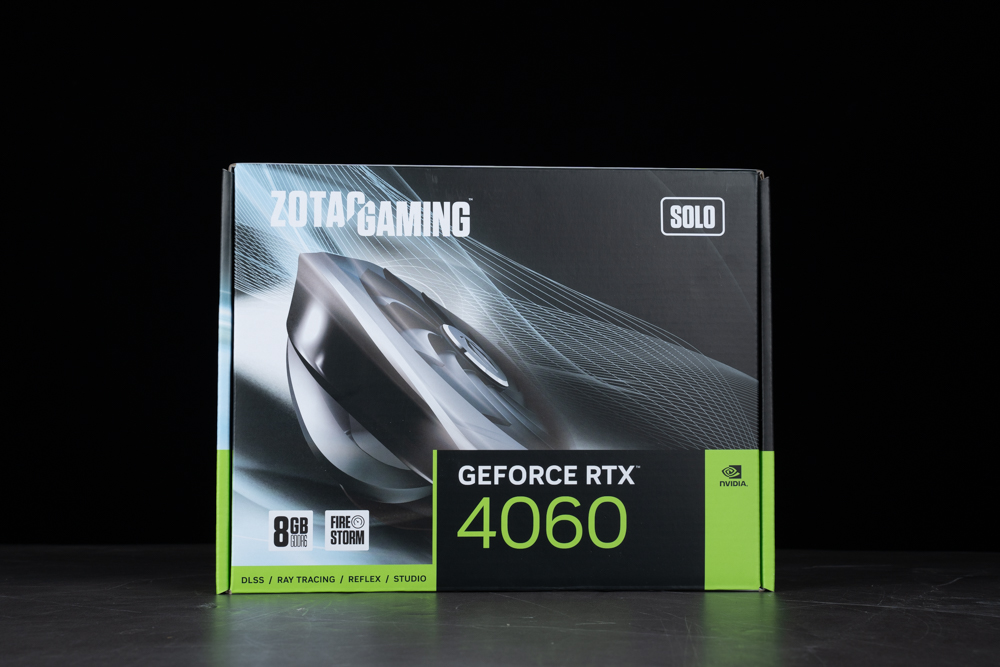
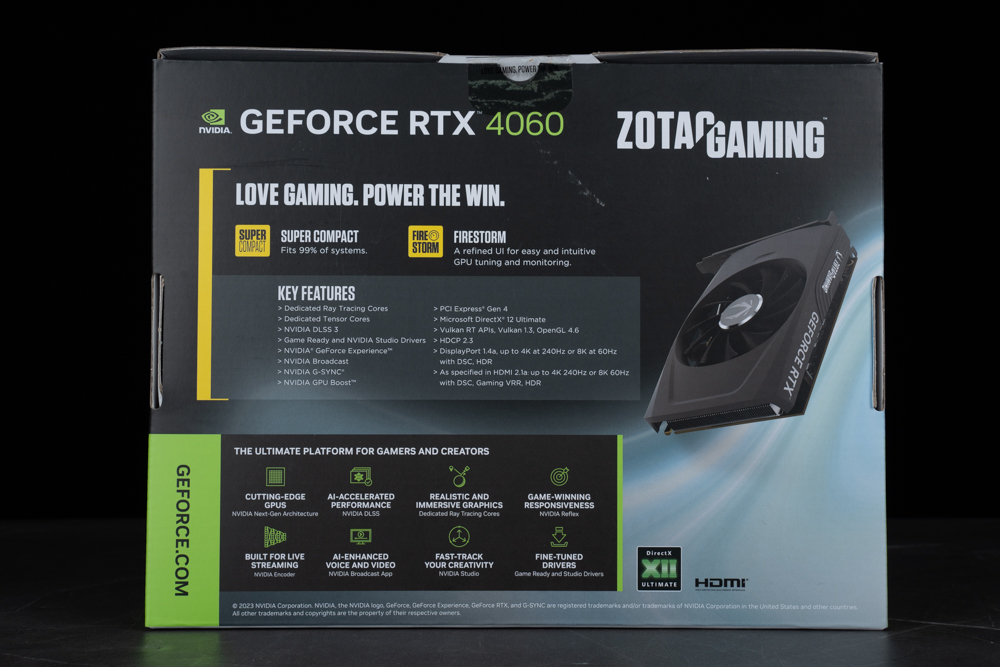
The NVIDIA RTX 4060 graphics card has been launched with a MSRP of NT$10,690, and ZOTAC has introduced the RTX 4060 8GB SOLO as the most affordable model in this lineup. Despite being smaller than the Twin Edge and featuring only a single fan cooling module, this compact design successfully shrinks the card’s length to 163 mm.
Despite being the smallest in the ZOTAC GAMING series to date, this RTX 40 series card doesn’t compromise on performance. Leveraging the TSMC manufacturing process, it offers a fantastic power-efficiency ratio, low temperature, and superior performance.
The dimensions of the ZOTAC GAMING RTX 4060 8GB SOLO are 163 x 117.6 x 39.5 mm, which is a notable 6 cm reduction from the 221 mm length of the RTX 4060 Twin Edge. For Mini ITX cases that are constrained by space, this 16.3 cm long card will certainly offer more convenience for installation and line routing.
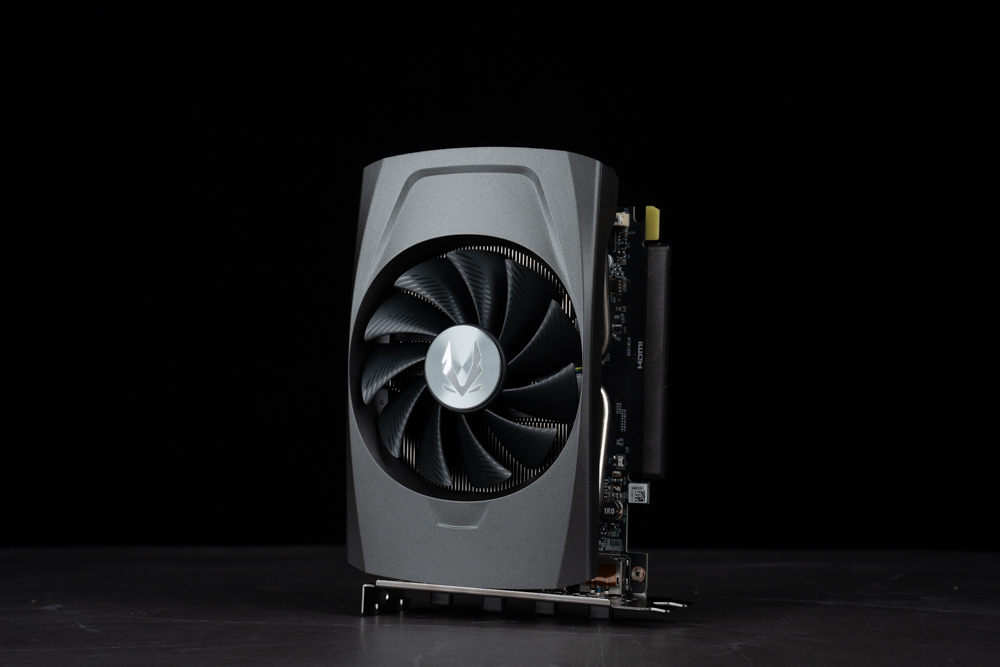
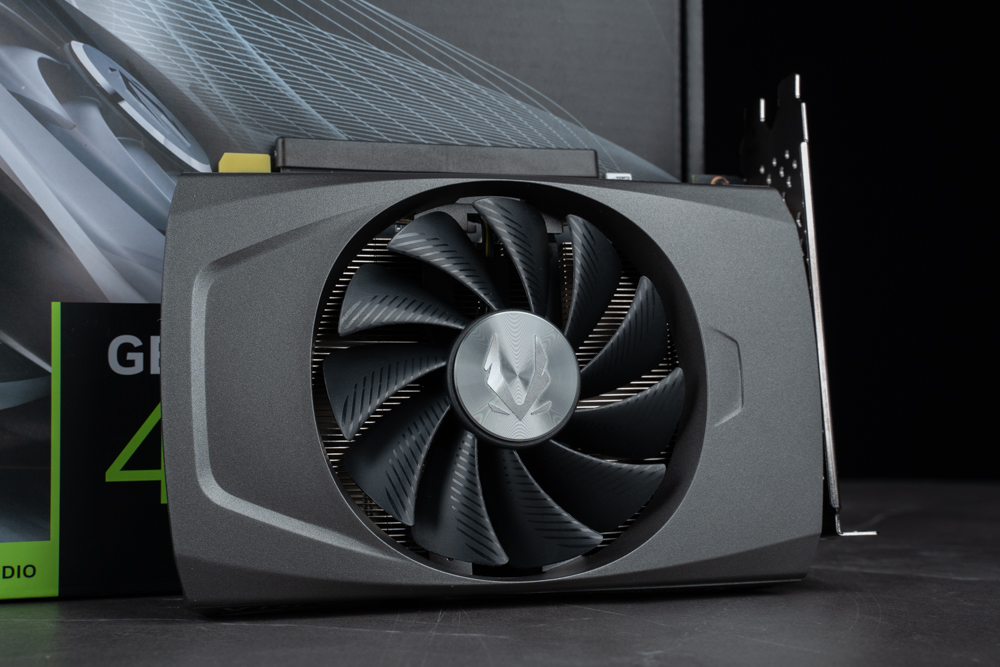
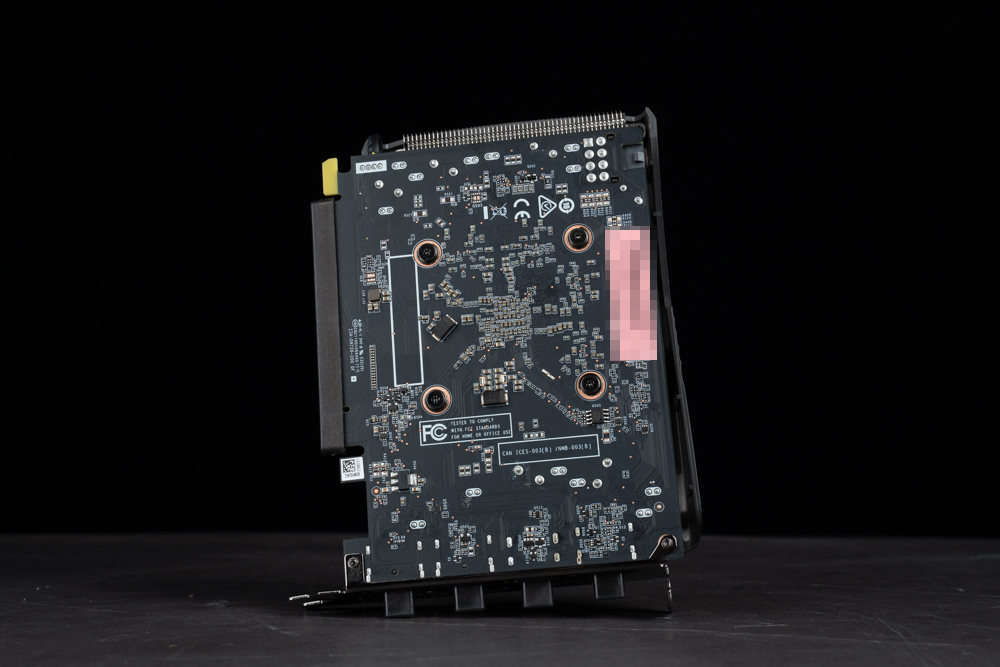
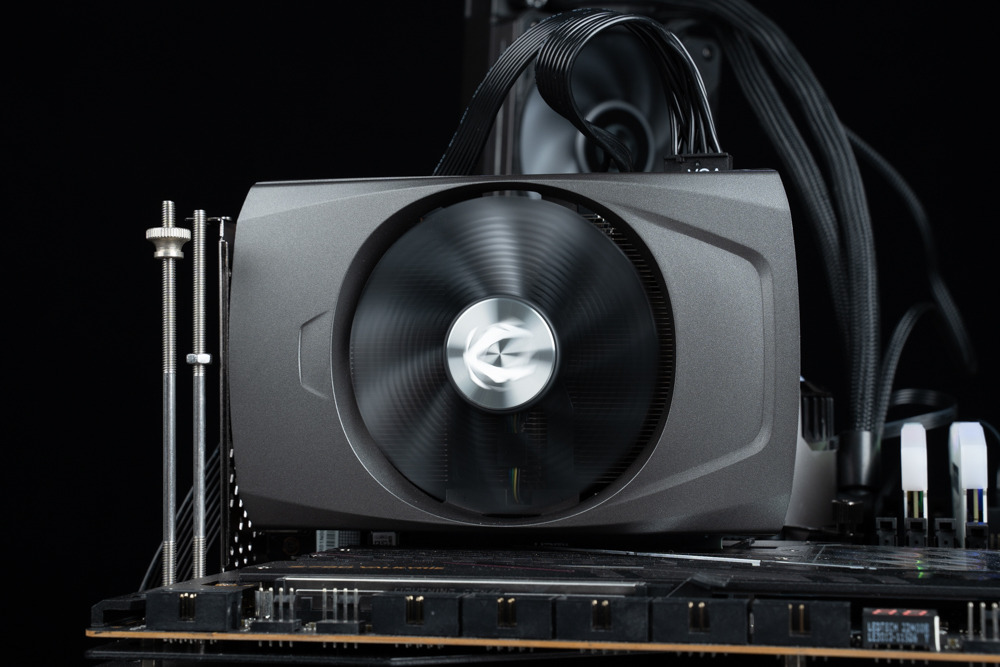
Given the rising popularity of back-to-back A4 structure cases in the ITX domain, the thickness of the graphics card cooling module has become a key factor for gamers. This is particularly important for the vertical installation of the graphics card. The ZOTAC GAMING RTX 4060 8GB SOLO, with its thickness of 39.5 mm, will utilize a 2-slot PCIe baffle installation space.
The ZOTAC GAMING RTX 4060 8GB SOLO draws power from a PCIe 8-Pin slot. If you have an older SFX power supply on hand and its wattage meets the recommended requirement, it can be used directly, allowing for a stand-alone graphics card upgrade.
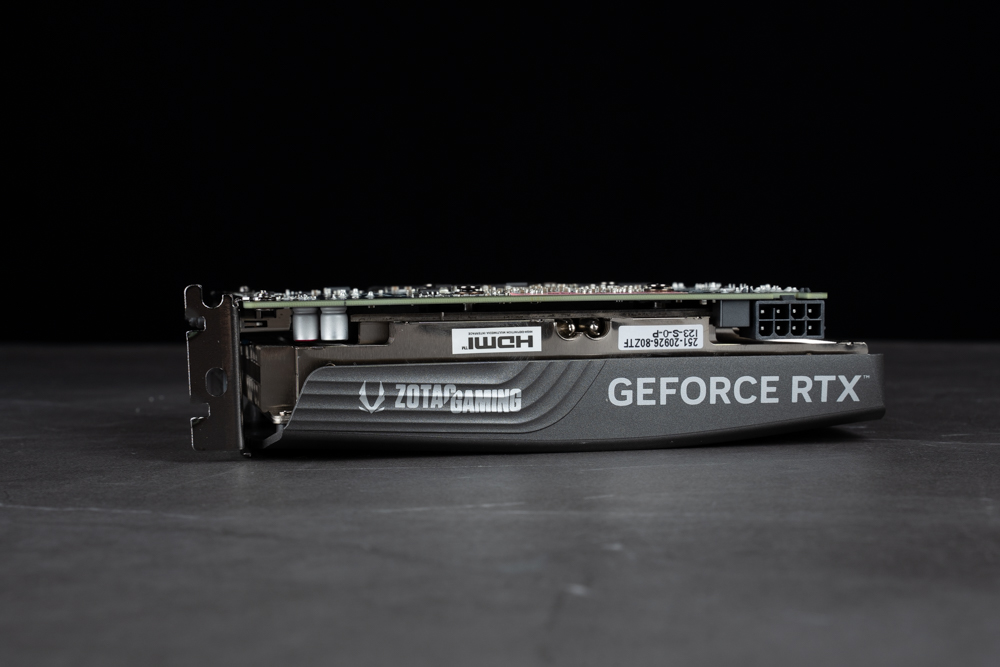
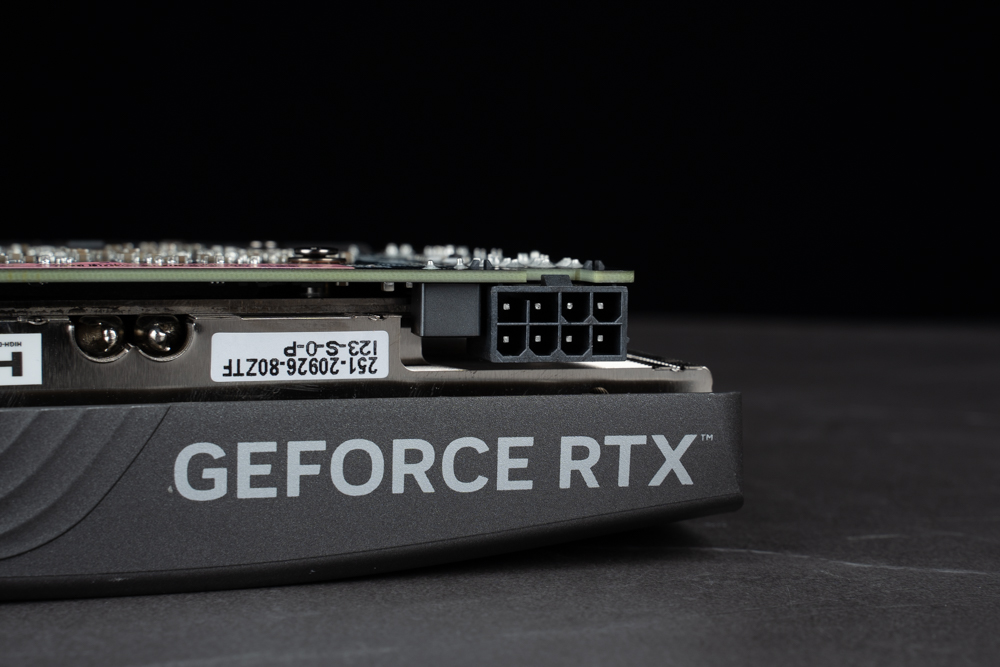
The ZOTAC GAMING RTX 4060 8GB SOLO can support multi-display output for up to four screens, with maximum resolution support of 7680×4320 at 60Hz. The card features a variety of screen output interfaces, including 3 x DisplayPort 1.4a and 1x HDMI 2.1a.
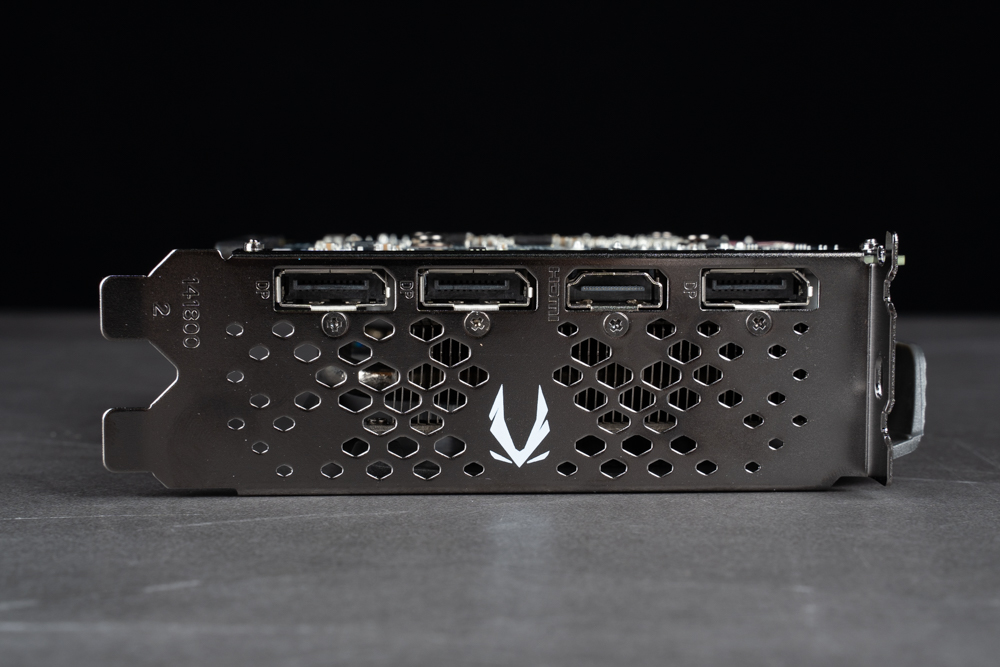
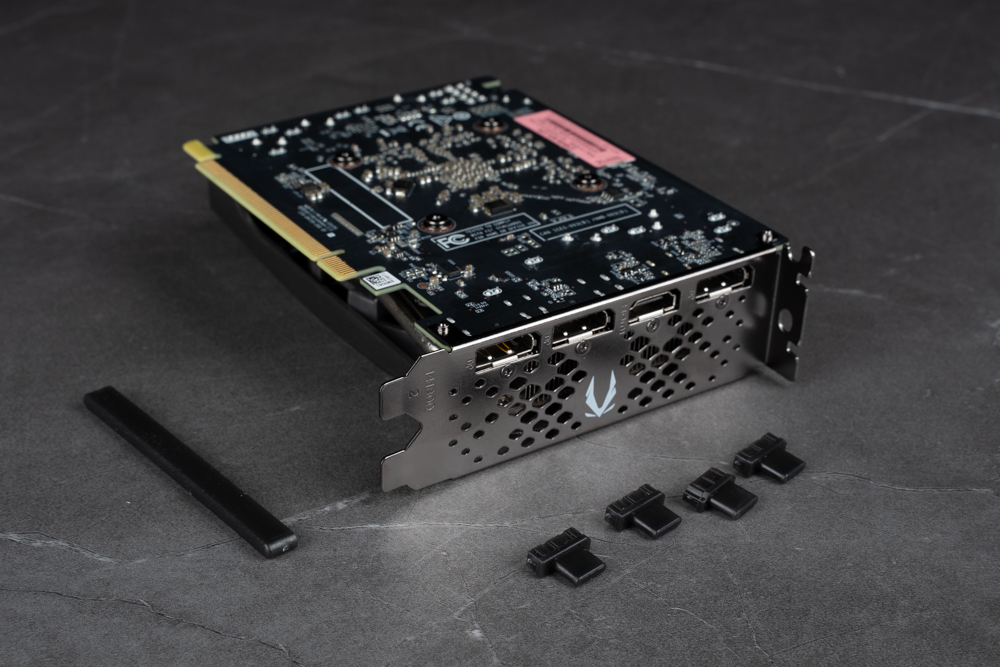
Upon disassembling the ZOTAC GAMING RTX 4060 8GB SOLO, its internal structure is revealed. The card employs the IceStorm 2.0 cooling module, consisting of nickel-plated dual heat pipes and vapour chambers, which effectively manage the heat of the AD107-400-A1 RTX 4060 GPU core. In addition, four Sk Hynix graphics card memory chips are equipped with thermal pads to assist in heat dissipation.
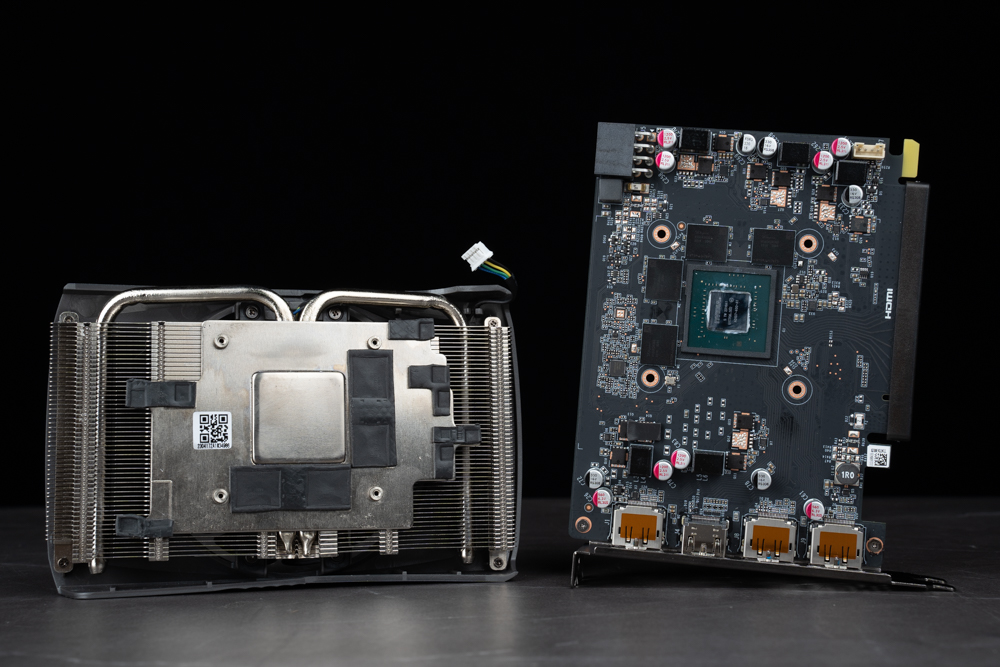
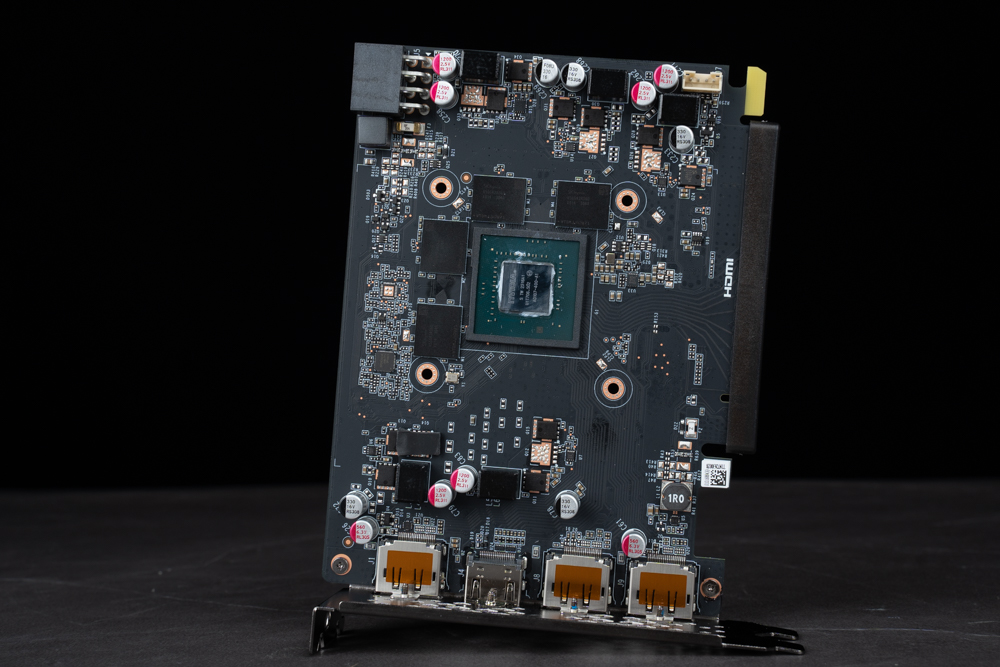
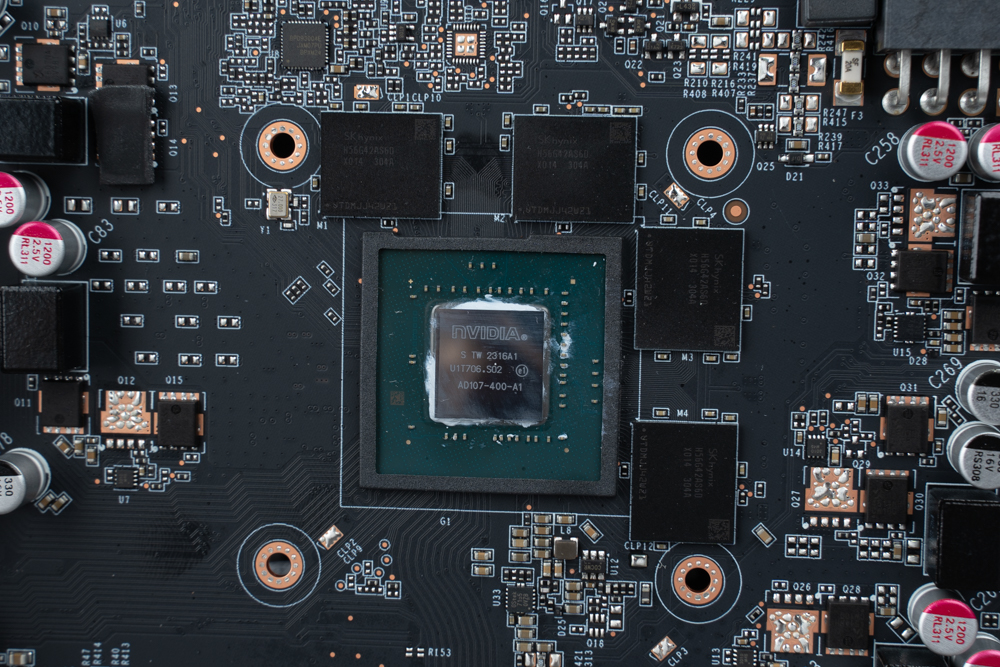
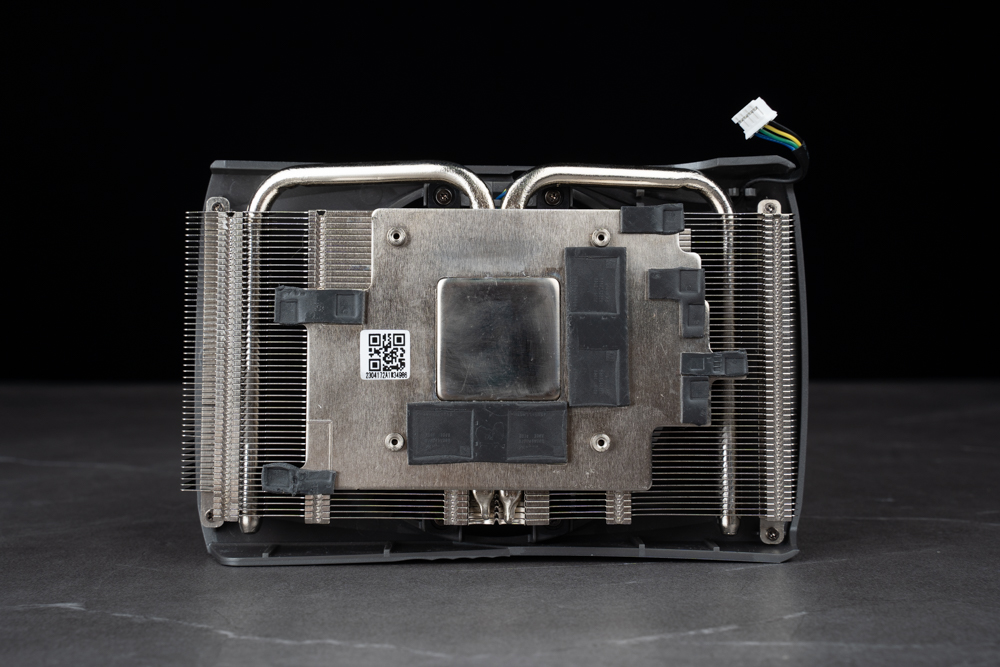
Simple and easy to control ZOTAC GAMING FireStorm graphics card software
ZOTAC has redesigned their GAMING FireStorm software specifically for NVIDIA RTX 40 series graphics cards. This software offers a range of settings for ZOTAC GAMING graphics cards, including the ability to view graphics card information and adjust overclocking parameters. Additionally, coinciding with the release of “Spider-Man: Across the New Universe”, the FireStorm software now sports a Spider-Man theme.
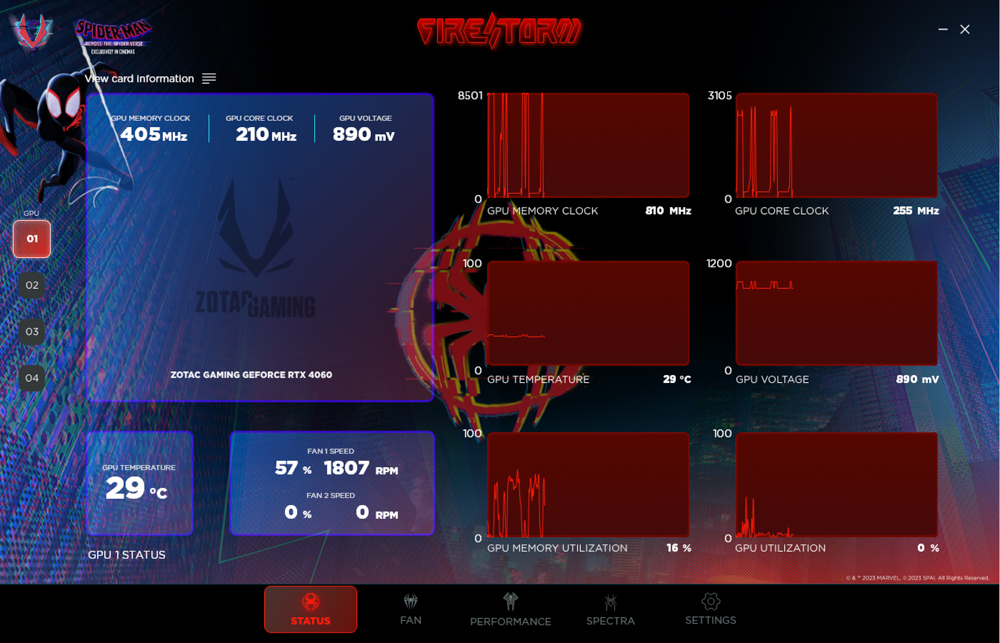

For gamers interested in maximizing the performance of their graphics cards, ZOTAC’s GAMING FireStorm software provides the ability to tweak various parameters. If a user isn’t well-versed in the specifics of graphics card overclocking, they can also make use of the OC SCANIER software feature, which allows for automatic overclocking.
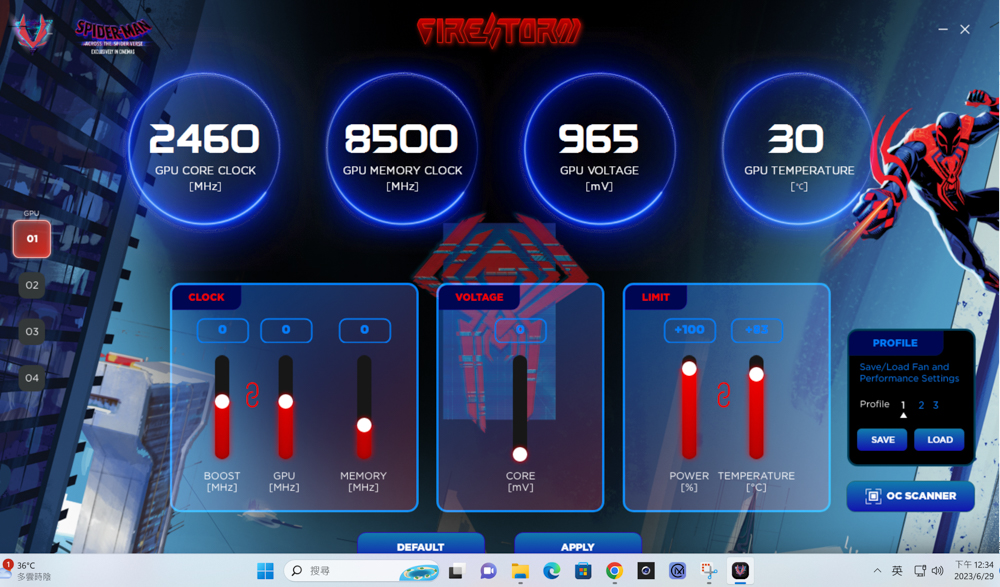
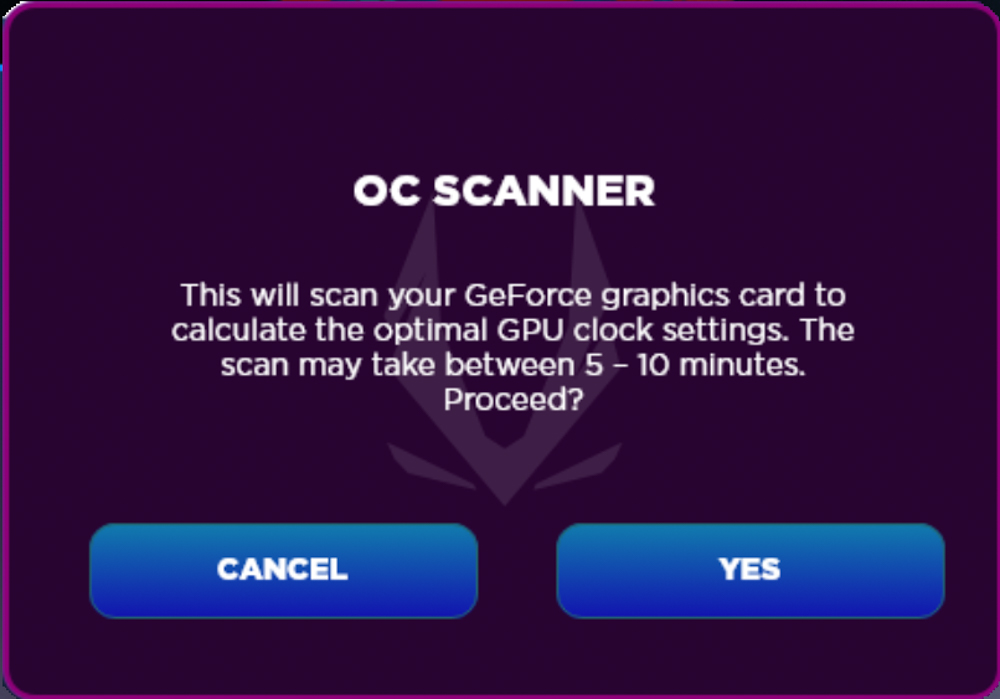
Graphics card professional creation and rendering tests
The ZOTAC GAMING RTX 4060 8GB SOLO graphics card was put to the test using an array of eight professional software programs: OctaneBench 2020.1.5, Indigo Bench, Blender Benchmark, SPECviewperf 2020 v3.1, Superposition 2017, UL Procyon benchmark, Vray5, and Geekbench 6. Many of these applications encompass rendering and professional work software tests, providing a comprehensive analysis through their built-in benchmark tests.
The test rig was powered by an Intel i9 13900K processor, a BIOSTAR Z790 VALKYRIE motherboard, and T-Force DELTA RGB DDR5 6200 MT/s 16GBx2 dual-channel memory.
The motherboard BIOS used was version Z79AC510, and both XMP 3.0 and Resizable Bar were activated. The GeForce Game Ready 536.20 driver was downloaded for the graphics card test.
Testing Platform details:
Processor: Intel Core i9 13900K
Cooler: VALKYRIE C360-RGB
Motherboard: BIOSTAR Z790 VALKYRIE (BIOS version: Z79AC510)
Memory: T-Force DELTA RGB DDR5 6200 MT/s 16GBx2
Graphics card: ZOTAC GAMING GeForce RTX 4060 8GB SOLO
OS: Windows 11 Pro 21H2
System drive: Corsair MP600 PRO LPX 1TB PCIe Gen4 x4 NVMe M.2 SSD
Game disk: GIGABYTE AORUS NVMe Gen4 SSD 2TB
Power supply: FSP Hydro G PRO ATX3.0 (PCIe5.0) 850W
Graphics card driver: GeForce Game Ready 536.20
The GPU-Z utility was used to confirm the RTX 4060’s specifications: a 4N FinFET (5 nm) process AD107 core with 3072 CUDA cores. The memory is 8192 MB GDDR6 (Sk Hynix) 128-bit, and the GPU default clock speed is 1830 Mhz / Boost 2460 Mhz.
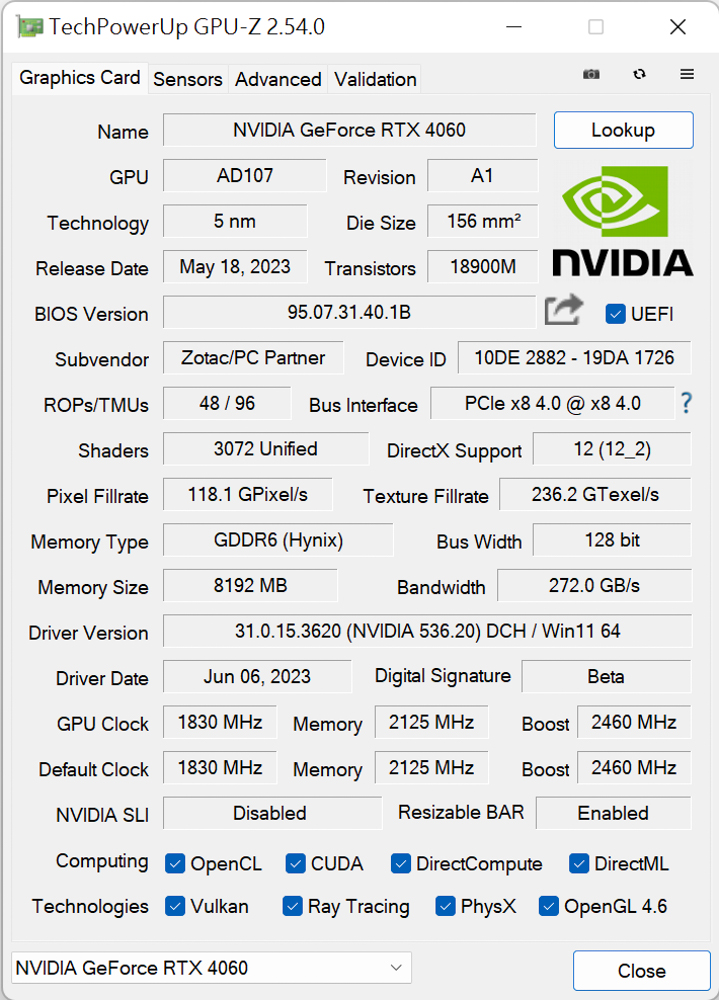
OctaneBench 2020.1.5, based on the OctaneRender GPU rendering engine, is a benchmark test that enables users to compare the rendering performance of various graphics cards. The 2020.1.1 version of OctaneRender incorporated ray tracing effects, thereby allowing the RTX acceleration feature to be activated in OctaneBench 2020.1 for NVIDIA RTX series graphics cards. This showcases the performance enhancement brought about by RTX series cards in ray tracing rendering tasks. In this particular benchmark, the ZOTAC GAMING RTX 4060 8GB SOLO scored 362.47 points.
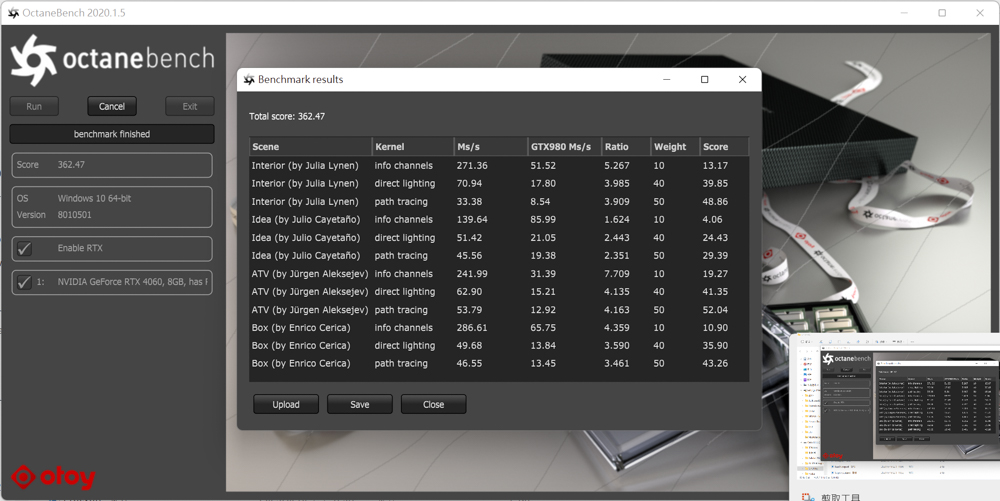
Indigo Bench is a free testing software that utilizes the Indigo 4 rendering engine. It employs the OpenCL architecture, making it compatible with NVIDIA, AMD, and Intel graphics cards and processors for evaluating rendering performance. The test provides two rendering scenarios – a bedroom and a sports car. The results are measured in scores, with a higher score indicating superior performance. In this particular test, the ZOTAC GAMING RTX 4060 8GB SOLO achieved rendering scores of 9.725/28.635 (M samples/s).
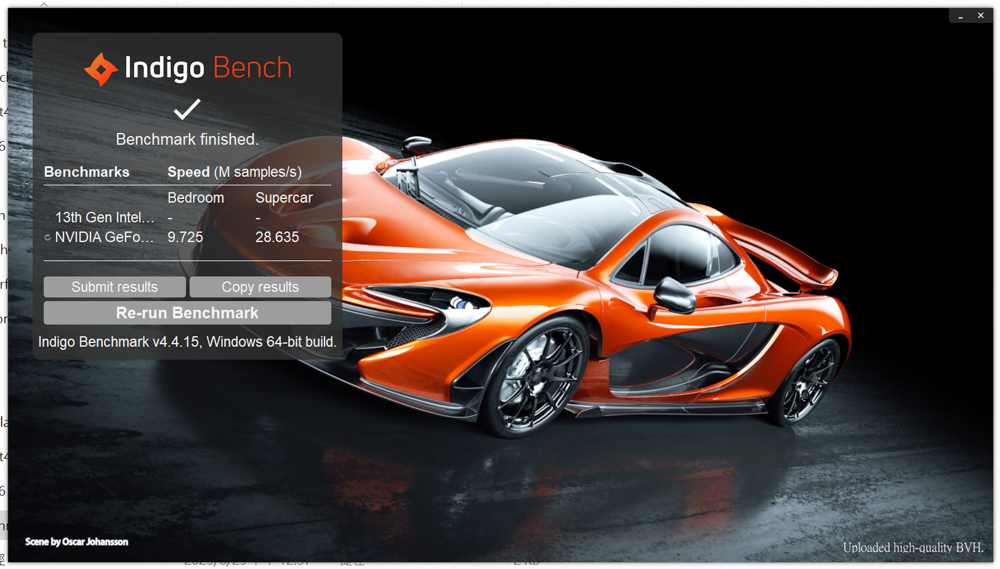
Blender Benchmark Launcher 3.6.0 is a free benchmarking tool provided by Blender, a popular 3D graphics software suite. The benchmark provides users with the option to evaluate the performance of either their CPU or GPU. The test itself comprises three scenarios: monster, junkshop, and classroom, each designed to rigorously assess the capabilities of the hardware.
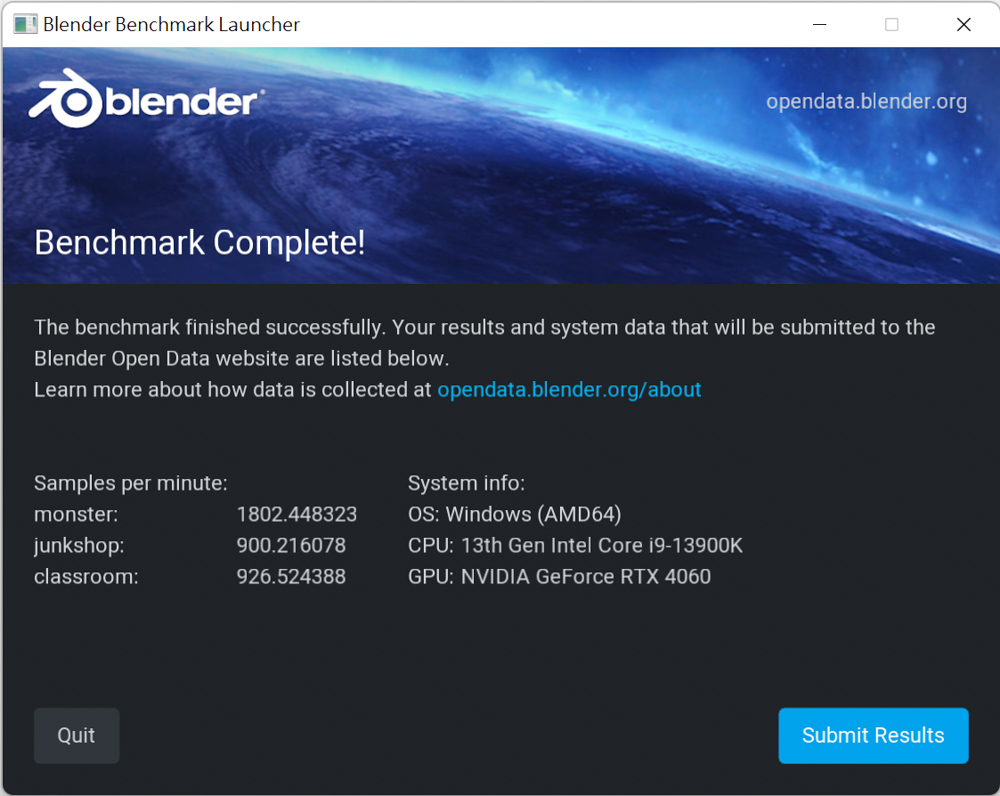
SPECviewperf 2020 v3.1 is a benchmarking tool that encompasses a variety of professional fields requiring 3D graphics and rendering software. It uses OpenGL and DirectX APIs to simulate 3D graphics performance. For this particular testing, the 4K quality test at 3840×2160 resolution included several applications such as 3ds Max, CATIA, Creo, Energy, Maya, Medical, SNX, and SolidWorks.
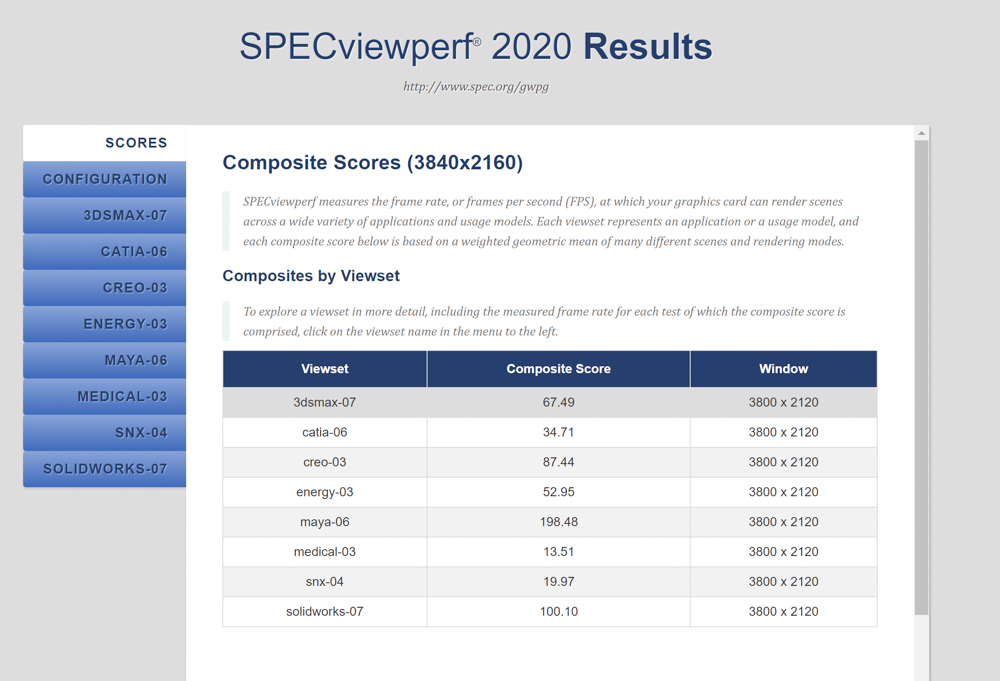
Superposition 2017 is a benchmarking software based on the UNIGINE 2 engine, which is commonly used in the development of simulators, cross-platform games, Virtual Reality applications, and 3D design software. It supports a range of Graphics APIs including OpenGL 4, Vulkan, and DirectX 12. During benchmarking, one can select from a variety of Graphics API options and choose to test using DirectX with 4K or 8K image quality. For the ZOTAC GAMING RTX 4060 8GB SOLO, the 4K test yielded a score of 7918 with an average FPS of 59.22, and the 8K test gave a score of 3066 with an average FPS of 22.94.
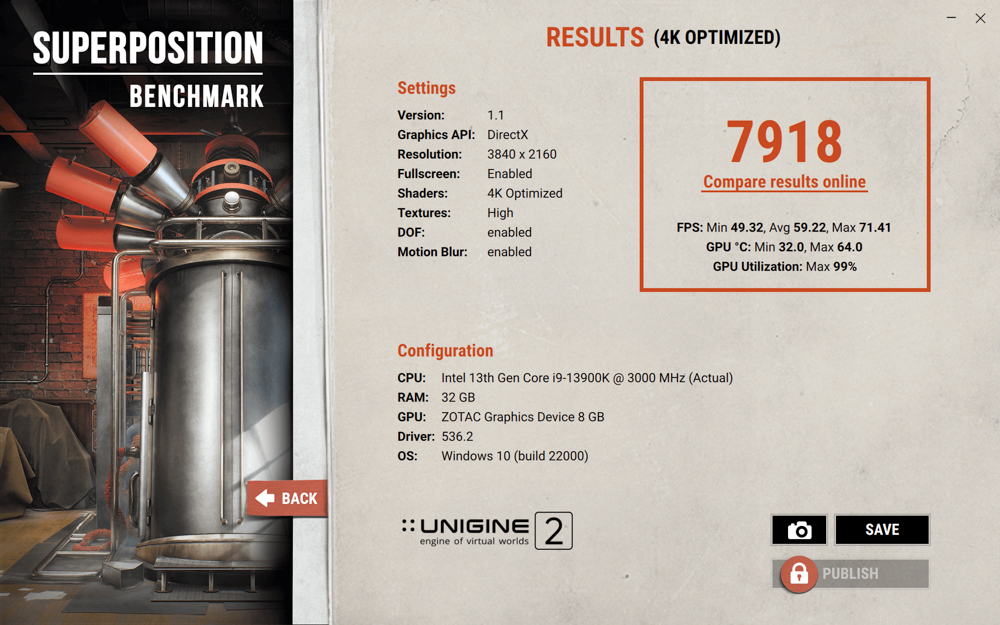
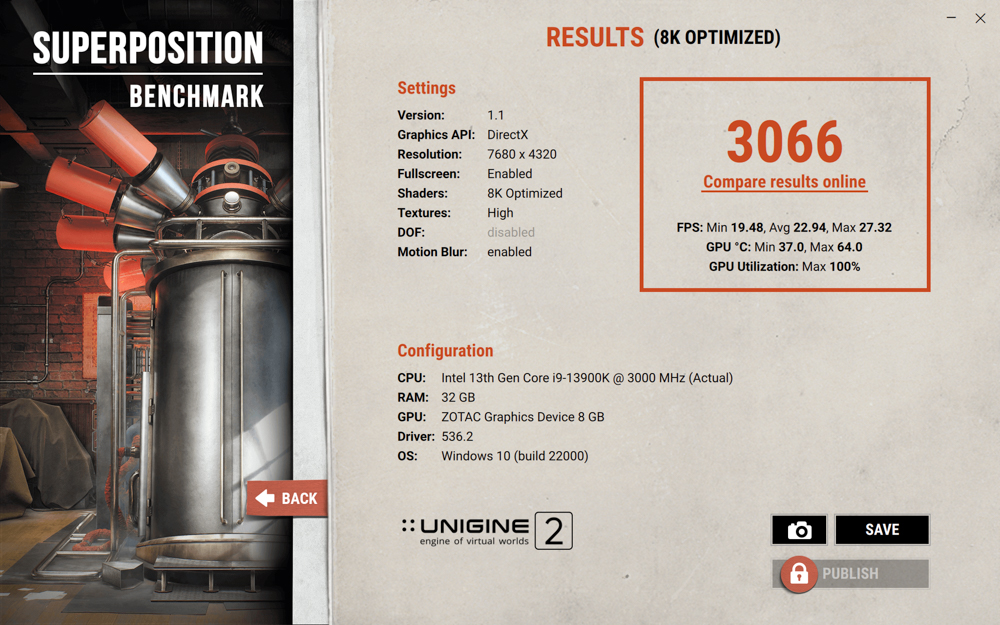
The Photo Editing Benchmark in UL Procyon is designed to evaluate image editing performance. This benchmark uses popular Adobe software like Photoshop and Lightroom for the test.
The first part of the Photo Editing Benchmark involves importing a Digital Negative (DNG) into Adobe Lightroom Classic, followed by cropping, adjusting, and modifying the DNG image.
The second part involves using Adobe Photoshop to apply a range of effects across multiple layers and then exporting the resulting image. The performance is then evaluated based on the image retouching score and batch processing score.
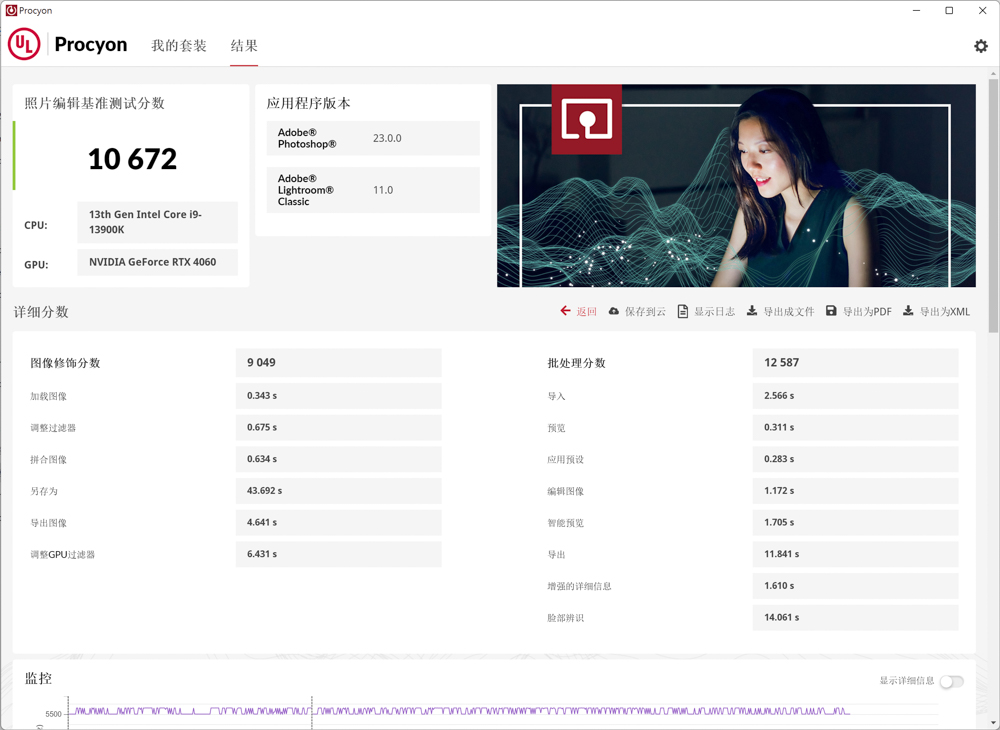
V-Ray 5 is a rendering engine benchmarking software developed by Chaos Group. This tool uses a free benchmark to measure the rendering speed of both the CPU and GPU on the V-Ray engine.
V-Ray GPU CUDA projects allow for simultaneous rendering using both the CPU and GPU, although they can also be tested separately. Additionally, the V-Ray GPU RTX projects are compatible with NVIDIA RTX series graphics cards and can be used for ray tracing rendering tests.
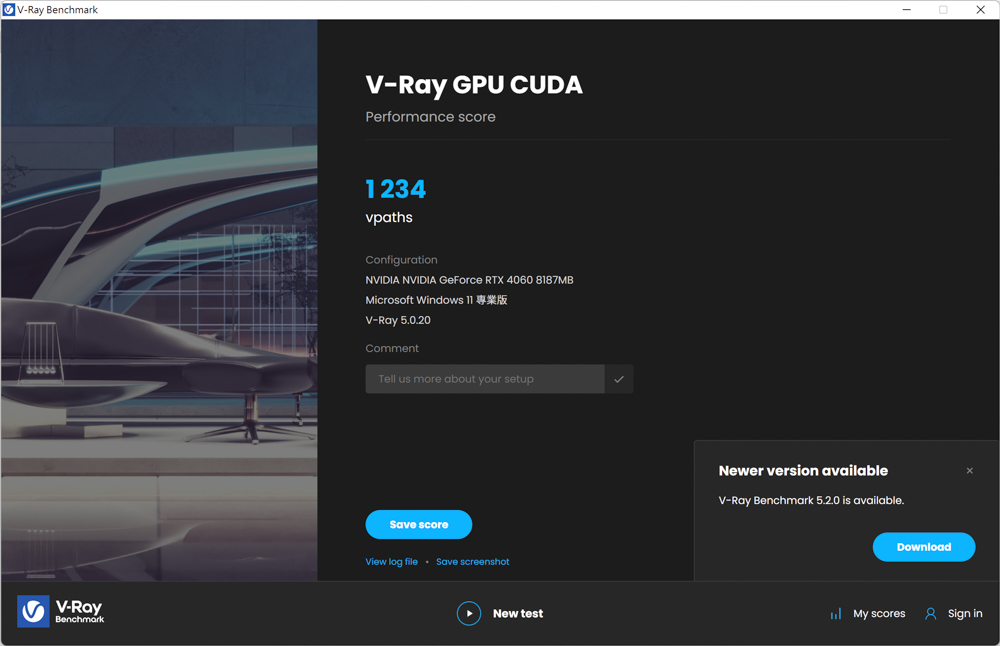
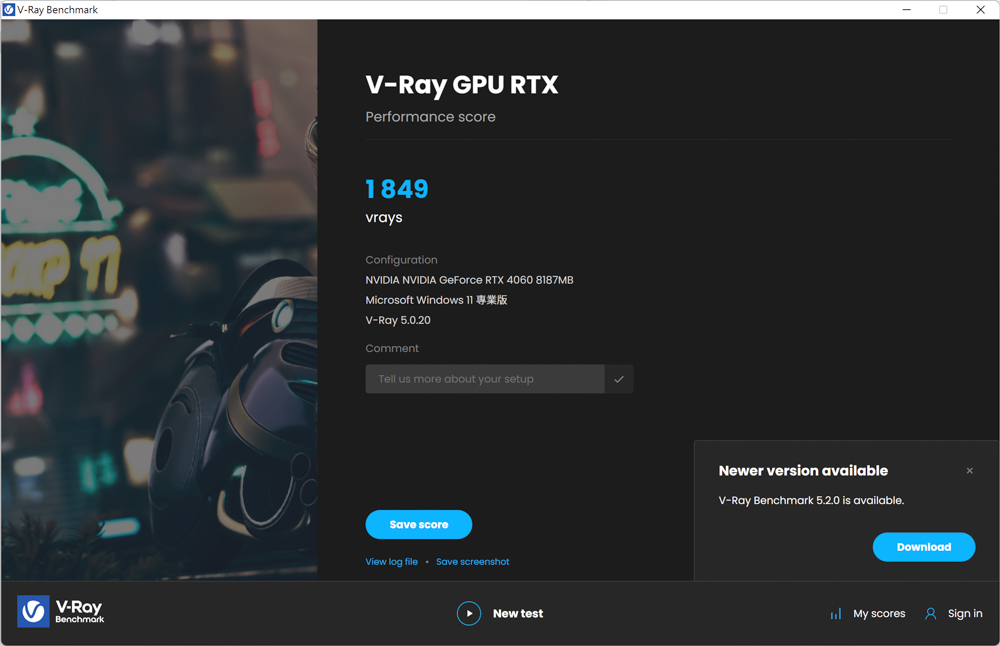
Geekbench 6 is a benchmarking software that includes CPU and GPU tests. Within Geekbench 6, the GPU Compute Benchmark project allows for evaluating the professional performance of graphics cards in various scenarios such as image processing, rendering, and machine learning (ML).
During the benchmark test, a workload consisting of tasks such as deep learning, background blur, face detection, image editing, level detection, edge detection, Gaussian blur, image synthesis, feature matching, stereo matching, particle physics, and more is used. These tasks collectively contribute to the total score obtained from the benchmark.
The GPU API options available for testing in Geekbench 6 include OpenCL and Vulkan. This allows for assessing the GPU’s performance in different computing scenarios.
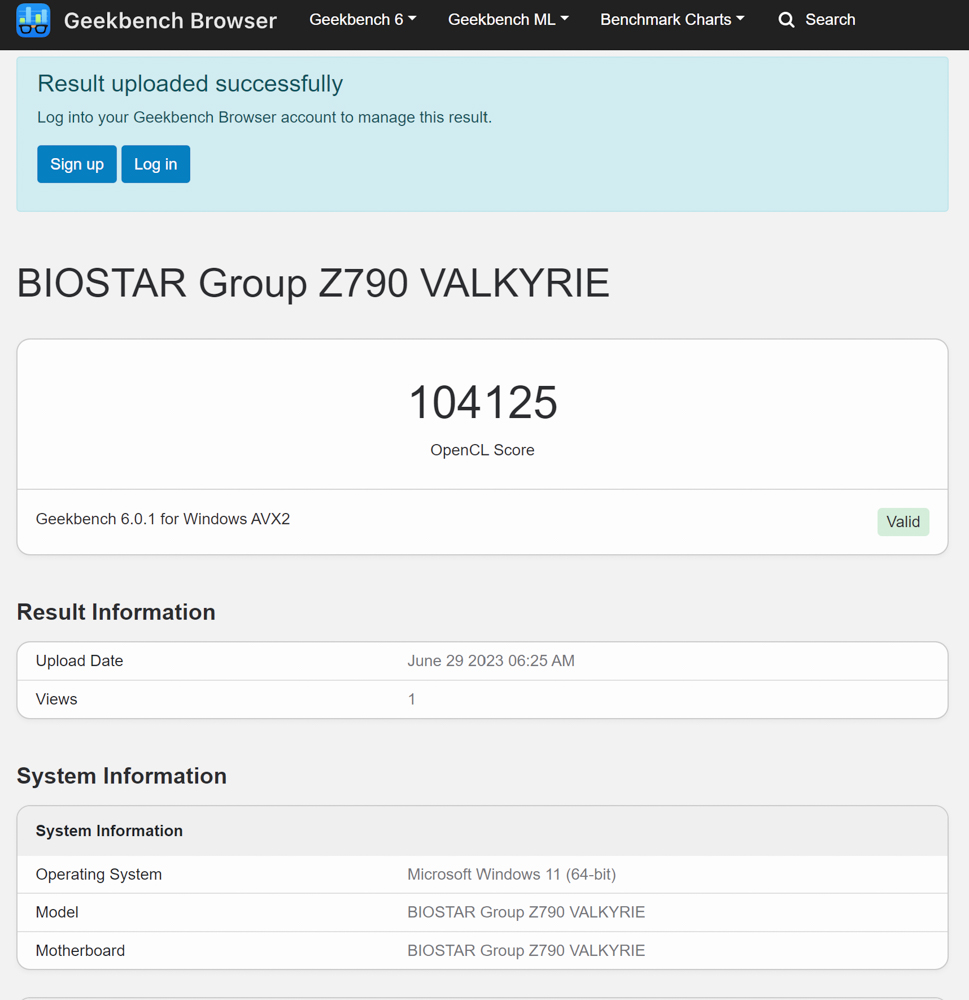
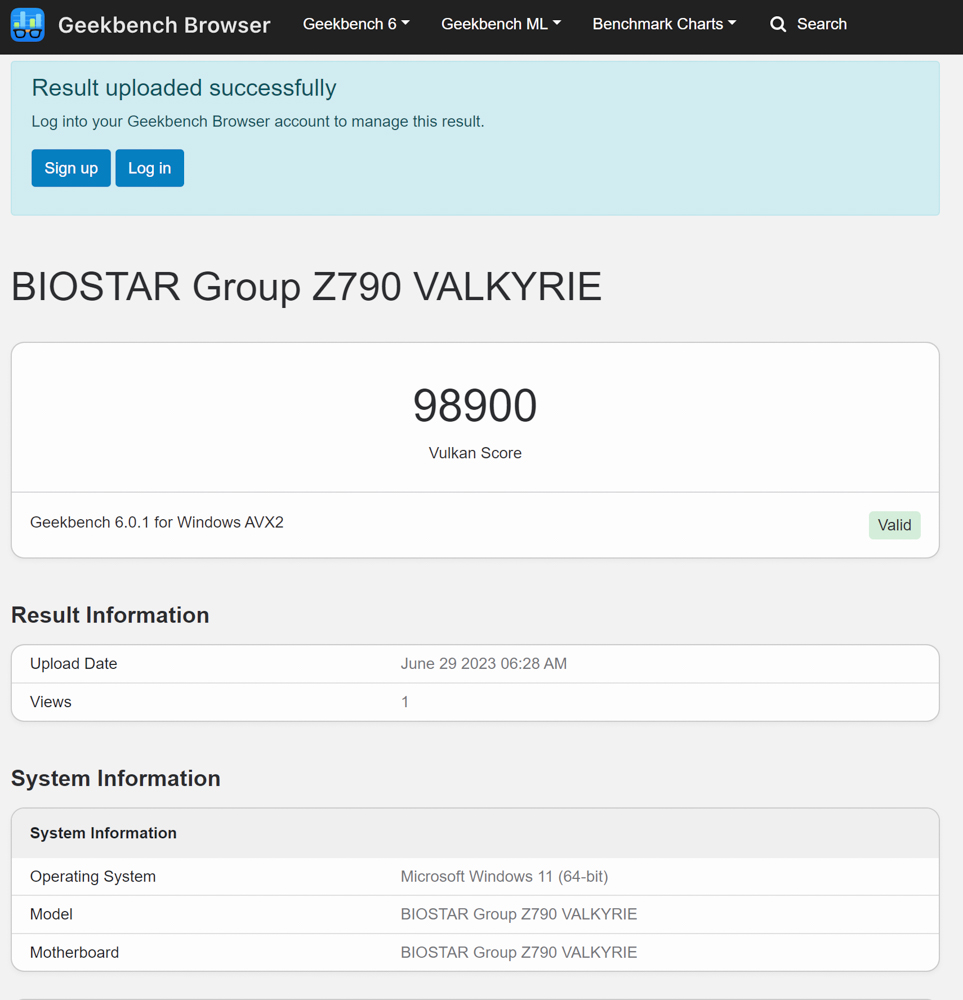
3DMark running score test
The next set of tests will be conducted using 3DMark software, which is currently one of the most reliable indicators of graphics card performance in gaming. The test will encompass different image qualities and aspects, employing the GeForce Game Ready 536.20 driver version, while XMP and Resizable Bar are enabled.
3DMark Fire Strike, which utilizes the DirectX11 GPU API, consists of two tests: a physics test and a joint CPU and GPU test. These tests assess game performance at three different image qualities: 1080p, Extreme 1440p, and Ultra 2160p.
The results obtained from these tests are as follows:
- Fire Strike (1080p) – Total score/graphics card score: 26867/27546
- Fire Strike Extreme (1440p) – Total score/graphics card score: 12812/12980
- Fire Strike Ultra (2160p) – Total score/graphics card score: 6016/5653
These scores indicate the performance level achieved by the tested graphics card across different image qualities and resolutions.
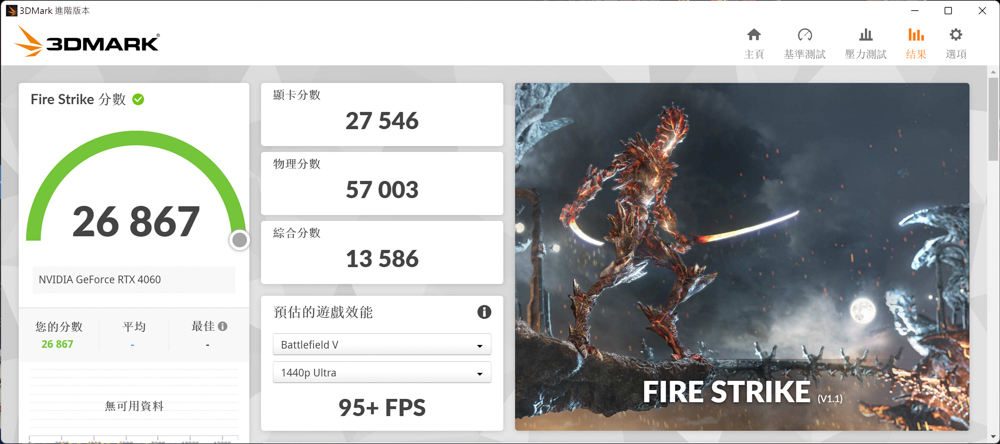
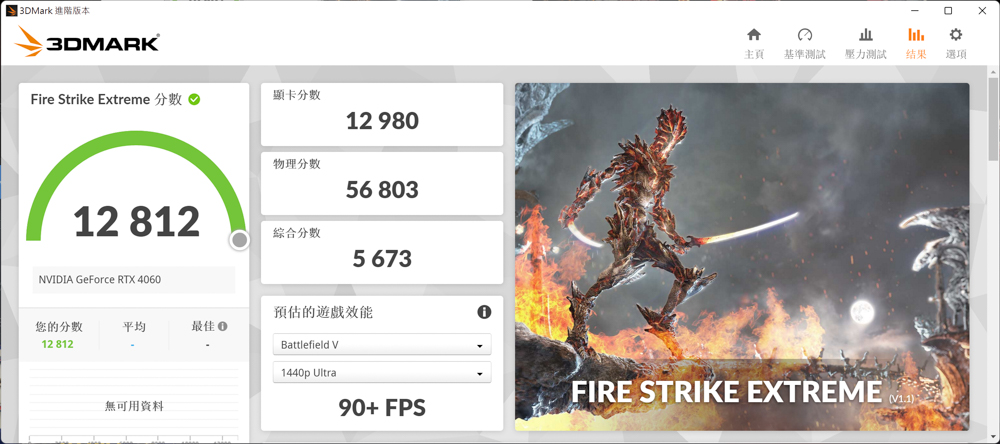
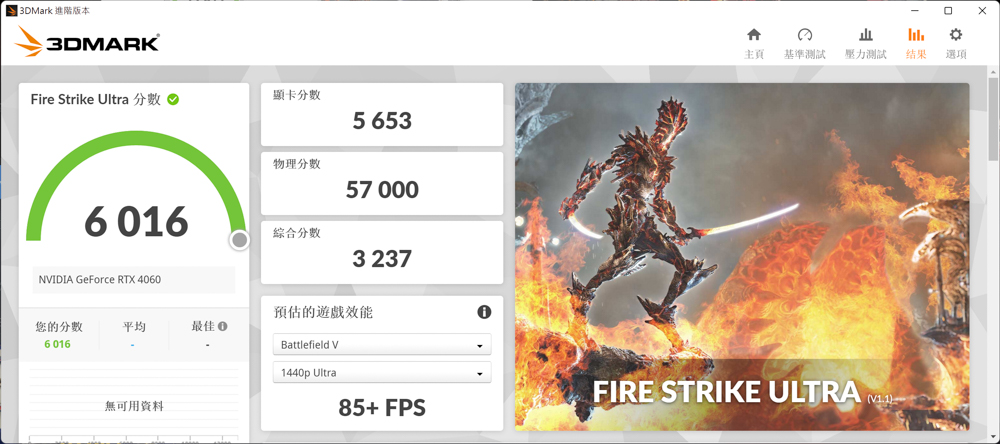
3DMark Time Spy is a DirectX 12 GPU API benchmark that focuses on game-oriented performance testing. It offers a test at 2K (1440p) resolution and also includes a Time Spy Extreme project that targets 4K (2160p) resolution for more demanding game performance evaluation.
The results from the Time Spy benchmark are as follows:
- Total score/graphics card score: 11415/10454
For the Time Spy Extreme project, the results are:
- Total score/graphics card score: 5408/4889
These scores provide an indication of the graphics card’s performance in game-oriented scenarios at both 2K and 4K resolutions.
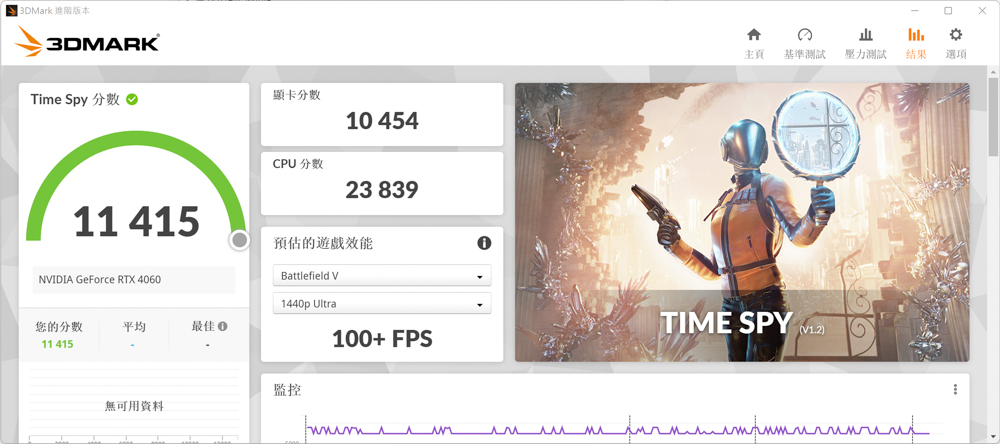
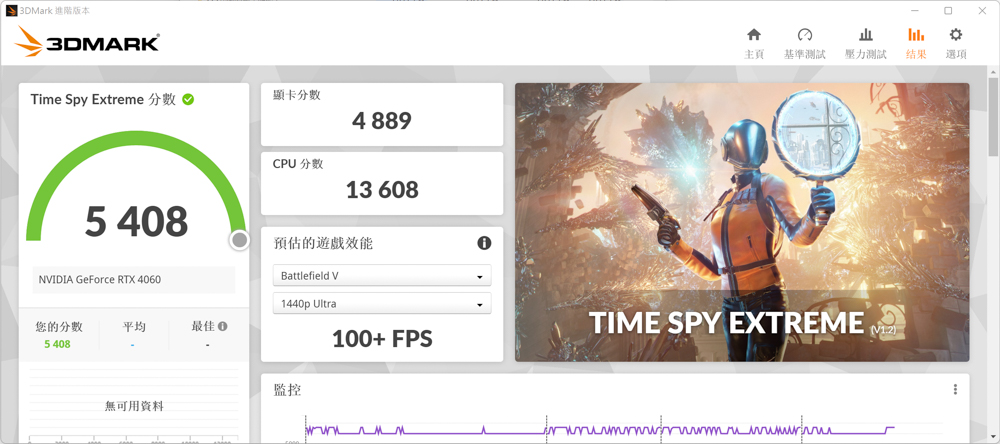
Port Royal is a benchmark test within 3DMark that utilizes the DirectX 12 DXR API. This test introduces real-time ray tracing and DLSS (Deep Learning Super Sampling) technology in a 2K image quality setting. It is considered the first real-time ray tracing benchmark specifically designed for gamers.
In the Port Royal test summary, the graphics card achieved a score of 5981 points. This score reflects the performance of the graphics card when it comes to real-time ray tracing and DLSS rendering in the Port Royal test.
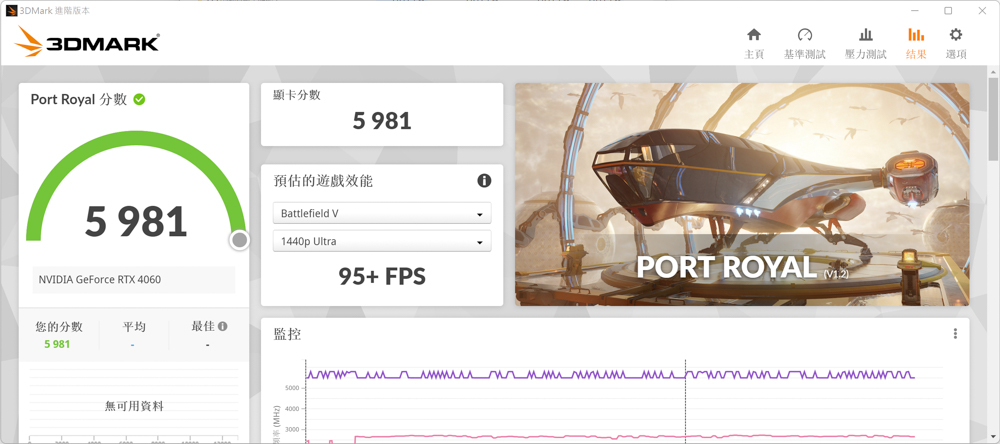
Speed Way is a benchmark test developed using the latest DirectX 12 Ultimate API. It incorporates cutting-edge features such as DirectX Raytracing tier 1.1 for real-time ray tracing global lighting, ray tracing reflections, Mesh Shader, and other advanced technologies. This benchmark serves as a performance evaluation for ray tracing in gaming.
In the Speed Way test, the graphics card achieved a score of 2526 points. This score indicates the graphics card’s performance in handling real-time ray tracing and other advanced rendering techniques in the Speed Way benchmark, providing gamers with a reference for ray tracing game performance.
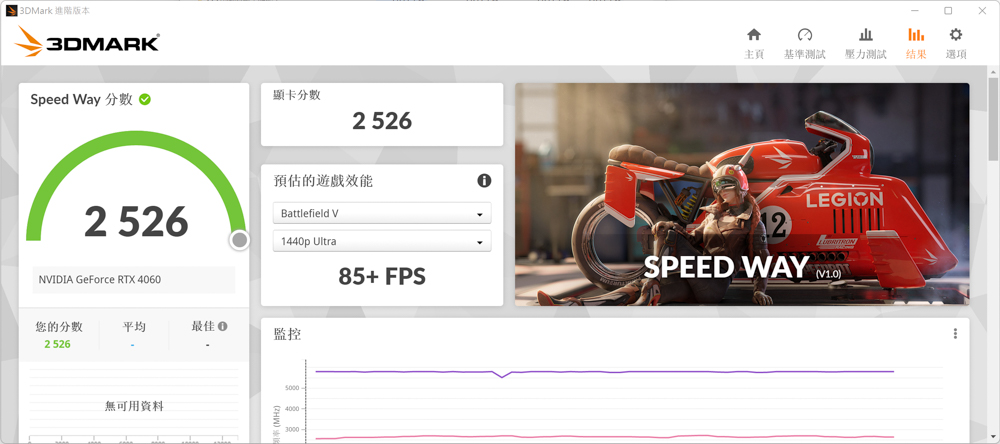
The 3DMark DLSS Function Test is designed to quickly assess the frame rate improvement achieved by enabling the NVIDIA DLSS (Deep Learning Super Sampling) feature. Users can choose between DLSS 3, DLSS 2, or DLSS 1 to conduct the test. It is important to note that only the latest NVIDIA RTX 40 series graphics cards support DLSS 3 projects. The test allows for comparisons across four different resolutions: 1080p, 1440p, 4K, and 8K (DLSS 2/DLSS 3 only).
The benchmark follows the same testing process as the Port Royal benchmark, with two test runs performed to obtain results. For the 1080p, 1440p, and 4K image qualities, users can select between DLSS Quality and DLSS Performance modes. The 8K image quality additionally offers an Ultra Performance mode. The benchmark provides frame rate (FPS) charts that demonstrate the impact of enabling or disabling DLSS across different image qualities for the three versions of DLSS supported by the graphics card.
Three FPS-type e-sports games are tested
The ZOTAC GAMING RTX 4060 8GB SOLO is capable of smoothly running all three iconic FPS games, namely “Overwatch 2”, “Rainbow Six: Siege”, and “Apex Legends”, at full 1080p resolution and 144 frames per second (fps).
In the case of “Apex Legends”, there is a default frame rate limit of 144 fps. However, if you wish to exceed this limit, you can manually input a code to change it. Therefore, during the testing, the author will also assess the frame rates achieved in “Apex Legends” according to the preset settings.
Nine AAA masterpiece game tests
In the AAA game test, the focus is on the visual experience and storytelling aspects of the games. The author has selected several notable titles such as “Hogwarts Legacy,” “The Witcher 3: Wild Hunt,” “Cyberpunk 2077,” “Watch Dogs: Legion,” “Far Cry 6,” “God of War,” “Red Dead Redemption 2,” “Horizon Zero Dawn,” and “Assassin’s Creed Valhalla” for testing.
Since most players prioritize visual performance over the highest frame rates in AAA masterpieces, the author has set the texture and special effects options in these games to the “highest” settings available within the game. For games that support NVIDIA DLSS technology, the DLSS mode is set to “Quality” or “Image Quality.” For AMD FidelityFX Super Resolution (FSR), the “Extreme Quality” mode is selected to achieve a certain level of frame rate improvement while maintaining the visual performance as much as possible.
During the testing, the frame rates are collected using software, recording both the average (AVG) FPS and the 1% low FPS to provide a comprehensive understanding of the game’s performance.
Five ray tracing games tested
The NVIDIA RTX 40 series graphics cards, featuring the third-generation RT Core, offer enhanced ray tracing performance compared to the previous RTX 30 series. To assess the ray tracing capabilities, five DXR (DirectX Raytracing) games were selected for testing: “Hogwarts Legacy,” “The Witcher 3: Wild Hunt,” “Cyberpunk 2077,” “Watch Dogs: Legion,” and “Far Cry 6.” The special effects settings in these games were set to the “highest” profile, and real-time ray tracing was set to the “highest” or “crazy” mode to maximize visual fidelity. Additionally, DLSS 3 was utilized with the Quality/Graphics mode to improve frame rates, while AMD FidelityFX Super Resolution (FSR) was set to Ultra High-Quality mode.
Display card temperature and power consumption test
To measure the temperature and power consumption of the graphics card, the testing was conducted on an open test platform in an indoor environment with a temperature of 26°C. The author used “Cyberpunk 2077,” Time Spy, and Furmark to perform real-time measurements.
The highest GPU temperature (GPU temperature) and GPU power consumption were recorded using HWiFO64. It’s important to note that software-based monitoring of GPU power consumption may have a deviation of 1-3%, so the collected data should be considered as a reference.
Summarize
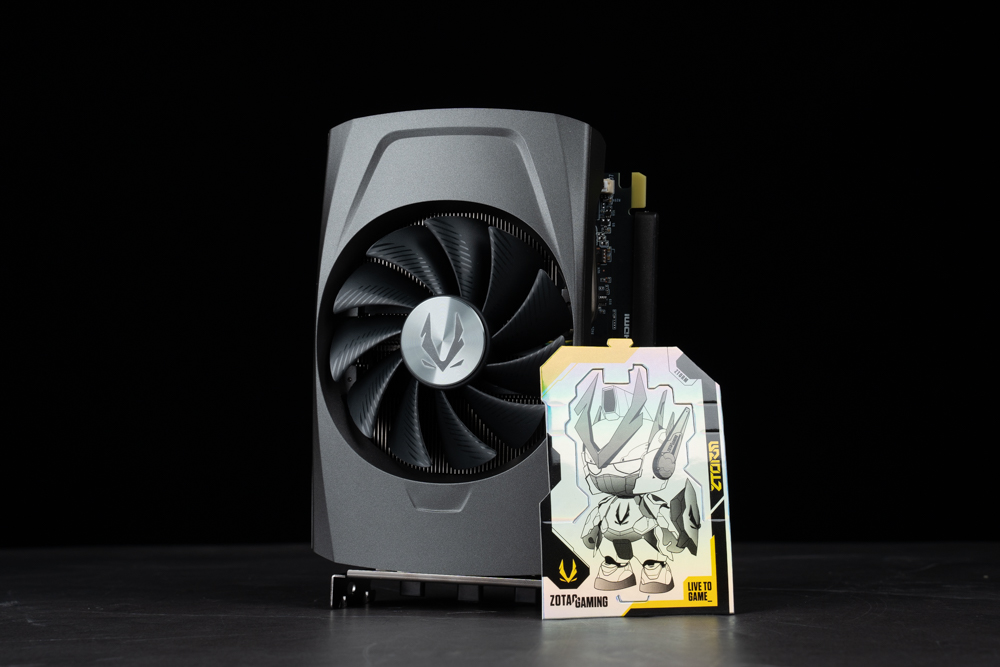
The ZOTAC GAMING GeForce RTX 4060 8GB SOLO offers excellent performance at a lower price compared to NVIDIA’s MSRP. It can easily achieve an average frame rate of 144fps in FPS games with 1080p Full HD resolution, with all quality effects and textures turned on. In AAA masterpiece games, it achieves an average frame rate of 127fps.
DLSS 3, an AI-powered frame rendering technology, significantly enhances the performance of real-time ray tracing games, enabling average frame rates of over 90fps. However, if there are capacity limitations, the frame rates may drop, with the 1% low FPS reaching 32fps. For demanding games like “Watch Dogs: Legion” that require more graphics card memory, it may be necessary to lower the texture quality and ray tracing settings.
The ZOTAC GAMING GeForce RTX 4060 8GB SOLO, equipped with a single fan, effectively cools the 115W RTX 4060 core, with a maximum temperature of only 64.2°C. It is an ideal choice for assembling a Mini ITX system for 1080p gaming. Additionally, the special pre-sale price of NT$9990 makes it an even more attractive option.
If this article is helpful for you, please share this article with your friends on social media. Thank you!
This article is based on the personality of the reviews. You are responsible for fact-checking if the contents are not facts or accurate.
Title: Unpacking and testing the ZOTAC GAMING GeForce RTX 4060 8GB SOLO graphics card, a lightweight FHD armour-shielded model